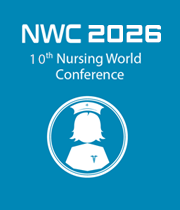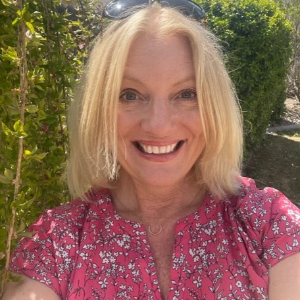Title : Incorporating end of life content early in bsn programs
Abstract:
Educating students about end-of-life, death, dying, and grief is a passion of mine, which many may find unusual. These are not easy topics, but they are important. I have seen a lot of death and dying throughout my career. As I tell my students, death can and does happen anywhere. It is part of life. We can’t avoid it, especially as nurses. This is true now more than ever due to the COVID-19 pandemic. I have had more students caring for dying patients than ever before, and it is not fair to expect them to handle these difficult situations if they aren’t prepared for it in a classroom setting first.
I will never forget my first experience caring for a patient who died. I was a new nurse, about a month into my first job on the telemetry floor. My patient was in the hospital with a new heart condition and needed medical testing and medication management. Nothing pointed to the fact that he was about to die. I had assisted him into the bathroom with instructions to push the call light when he was finished. After 15 minutes, I checked on him. I found him still sitting on the toilet, slumped against the wall, blue, not breathing and without a pulse. Despite CPR, he did not make it. Since it was unexpected, it was very difficult for me, especially as a new nurse. Handling the logistics of post-mortem care along with helping his family cope when they heard the unexpected news was tough. It made me realize how ill-prepared I was to handle this as a young nurse who had almost no exposure to death and dying prior to this situation. After several years in the nursing field, I became very comfortable handling all aspects of death, dying, end-of-life care and supporting patients and their loved ones through the process. I learned that death can come suddenly, or it can take months. I enjoyed connecting with patients and families who were facing “the end,” and I wanted to help them through it with dignity and care. This led to my career in hospice and palliative care nursing, and now it is a big part of what I teach my students.
End-of-Life Care in the Classroom and Clinical Setting
My career as a hospice RN helped me see how important it is to include end-of-life education in a nursing curriculum. End-of-life care is a broad term that is often used to describe the medical care and overall support that is needed at the time of death. Typically, it is performed by nurses in hospitals, long term care and home care settings, yet many have limited to no end-of-life education to do this effectively. Some baccalaureate programs are adding a 1-3 credit course in upper level nursing curriculums that teach nursing students the basics of symptom management (dyspnea, pain, anxiety), post-mortem care, and how to work with grief-stricken families. This is based on content from ELNEC (End-of-Life Nursing Education Consortium) using lecture and small group work. After a few years of research, they found it was better to incorporate this content throughout the program in all classes, rather than just one class at the end of the semester (Cleary, 2017).
When I trained new nurses at my hospice facility, many had little experience with death and dying, just as I did as a new nurse. It made me realize that I wanted to be part of a needed change. I wanted to teach the next generation of nurses, and I specifically wanted to incorporate end-of-life, death and dying content into the curriculum. I include a lecture and several activities related to death and dying in the Fundamentals of Nursing lecture and clinical courses that I teach to first semester nursing students. I go beyond the chapter in the textbook, which is post-mortem care and theories related to death and dying. I want students to think about it from the patient perspective, and to understand that providing care at end-of-life is as important as ushering new life into the world. Many students say “I don’t want to be a hospice nurse, I want to work in Pediatrics, or OB.” It does not occur to them that death will occur there, too. These beginning nursing students go to long term care facilities for their first clinicals, where they may be exposed to death the very first time they are in a patient care area. If they haven’t had some preparation, it can be overwhelming. We talk about what to expect if they see a patient who is actively dying, and what they can do to provide support and comfort such as oral care, symptom management, repositioning, dimming the lights, and just being present with the patient. I teach another class called Professional Development to beginning nursing students. We do a variety of activities such as practice having difficult conversations about death, discontinuing treatments, understanding Advance Directives, and ethical decision making involving controversial but real situations nurses are exposed to in the practice setting.
An example of a controversial issue in Colorado is Medical Aid in Dying. In 2016, Colorado voters approved proposition 106 “Access to Medical Aid in Dying.” This act provides medical aid in dying to qualifying patients with a prognosis of 6 months or less to live. They must be able to request and self-administer medical aid-in-dying medication in order to voluntarily end their life, giving them a peaceful end that is also in their control. This act authorizes a physician to prescribe medical aid-in-dying medication to a terminally ill individual under certain conditions, and creates criminal penalties for tampering with a person's request for medical aid-in-dying medication or knowingly coercing a person with a terminal illness to request the medication (Colorado Department of Public Health and Environment, 2021). Many people are uncomfortable with this, including nurses and nursing students, although statistics show that each year there are more Colorado residents participating in this end-of-life care option. I believe nurses should have some exposure to this while in school so as not to be surprised when they are in practice. Most students do not realize this is a law, so talking about it is helpful. I teach students that it is not our job to judge or decide for our patients. Our job is to provide information, advocacy and support. Sometimes there is a fine line between what is ethical, moral and legal, but I teach students to understand state and federal laws and then decide where they fall with their beliefs based on values, ethics and morals. Part of being an ethical and skilled nurse is to provide support to all patients, whether our beliefs align with their beliefs. This is true in all areas, not just end-of-life issues. According to the law as well as the nursing profession’s guiding ethical principles, nurses should not assist with the direct part of this law (administering the medication to the patient that will end his or her life). The patient needs to be able to do that alone. Nurses do; however, provide support to the patient before as well as support to the family after their death.
This is just one example of what I discuss with nursing students. Another activity I use in the classroom is the Conversation Starter Kit, which helps students discuss Advance Directives and what they want to prioritize at the end of life (TheConversationProject.org, 2020). Most of them have never thought about it, but it opens their eyes to what our patients go through when we talk to them about this topic. The Loss Toss is another activity we do in the classroom. It was taken from an End-of-Life Nursing Education Consortium (ELNEC) conference (American Association of Colleges of Nursing, 2021). This activity gives students a glimpse of what it feels like to be a patient facing multiple losses. This is not just loss of life, but the everyday things we may take for granted such as mobility, ability to prepare food, get dressed or meet with friends for coffee or a hike. It is eye-opening for a student who has not experienced loss yet. It provides them with a renewed sense of empathy and compassion.
I teach Community and Population Health Nursing to students in their last semester, and again I talk about end-of-life topics. These students have opportunities for clinical experiences at hospice and palliative care settings, both in-patient and in the community. They also experience a six-hour simulation lab that is organized by a local hospice organization and supported by faculty. The students reflect on this experience, and a big takeaway is that they gain comfort and skills communicating and caring for patients at the end of life. I also invite a guest lecturer to my classroom from a local hospice. The students listen to “real world” experience from a hospice nurse, plus they learn how to recognize stages of dying, how to complete post-mortem care, and most importantly how to support patients and families emotionally, spiritually and physically during the last stages of life. After the lecture, the students participate in a discussion. They are reminded the classroom is safe place to ask questions about an often “taboo” subject.
Conclusion
After doing a literature review and my own work in this area, I have determined that adding end-of-life content early and consistently to a BSN program is important. It needs to be done throughout the program, using a variety of methods. According to Carmack and Kemery (2018), educational activities should be integrated throughout the learning experience and include elements of didactic teaching, clinical experiences, and application in simulation, including a focus on interprofessional education.
Many current and former students have said they found the content to be difficult yet valuable. Most stated that they felt better prepared to face caring for patients at the end-of-life.



